Wind Farm Landscape and Scenic Value
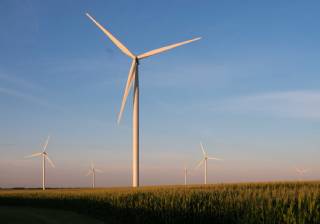
A landscape may be valued for many reasons, such as its landscape quality, scenic beauty, tranquillity or wildness,for its recreation opportunities, nature conservation or its historic and cultural associations. A wind farm will not necessarily be incompatible with valued qualities of a landscape; this will depend on the nature of the development and the nature of the landscape qualities.
LCAs do not place value on one landscape type over another, but they may point to the reasons why a landscape might be valued, because of special characteristics or the experience the landscape offers.Landscape and scenic value is recognised at national and local levels through de
velopment plan policies and designations such as National Parks, National Scenic Area (NSA) or local landscape designations including new Special Landscape Areas (SLA) and Areas of Great Landscape Value (AGLV), World Heritage Sites and Conservation Areas. In many areas,wind farm development is located outwith but close to these designations. In these circumstances the effects on the setting of the designated landscape area key onsideration.
Designations are usually supported by legislation and / or specific planning policies at a national and local level. The lack of any designation does not imply that a landscape has no value. Some landscapes are strongly valued incultural heritage terms, for example, while others may be valued for their perceived lack of human influence. In line with the European Landscape Convention we promote an ‘all-landscapes approach’, founded on the recognition of value in all landscapes.
The challenge is to ascertain why a landscape is valued and by whom, and then assess the predicted impacts of the proposed development on these values. The quality of a valued landscape is often set out in acitation or description. NSAs for example are described in ‘Scotland’s Scenic Heritage’
and our series of Special Qualities reports.
The key test applied in relation to NSAs, but often employed for other valued landscapes too, is whether impacts would affect the integrity of a valued landscape. It is important to consider the effects of wind farms located just outside areas identified for their scenic quality, as these have
the potential to affect the setting, and potentially the integrity,of that designation.
For local landscape designations, relevant information is contained within Development Plans. Where Planning Authorities have undertaken recent reviews of their local landscape designations,there may be Statements of Significance which can be referred to.However, for some valued areas, this information may not be available and the LVIA needs to first establish the quality of the valued landscape through assessment of the baseline conditions and how people use and benefit from the landscape(for example through consultation, visitor information and user websites).
Labels
low rpm wind turbinequiet wind turbinewind turbine yachtwind turbine portablewind turbine housewind turbine for farm5 kilowatt wind turbinemobile wind turbineold fashion windmillFarming Principle: Deep Soil Preparation
Looking at GB as a three-legged stool, deep soil preparation is one of the legs. Deep soil preparation builds soil and soil structure by loosening the soil to a depth of 24 inches (60 cm). Ideal soil structure has both pore space for air and water to move freely and soil particles that hold together nicely.

Smart Home Ecosystem - Smart Home Automation - Smart Home Security - Smart Home Technology
The outer-most level corresponds to the individual devices and sensors that consumers interact with. Several candidates are vying for the role of a leader introducing smart home services to the mass market.

Solar Energy Systems - Solar Modules - Solar Electric System Design - Solar Power
The heart of a photovoltaic system is the solar module. Many photovoltaic cells are wired together by the manufacturer to produce a solar module. When installed at a site, solar modules are wired together in series to form strings. Strings of modules are connected in parallel to form an array.
Solar Energy Systems - Array Mounting Racks - Solar Ray - Solar Panel - PV Racks and Mounts
Arrays are most commonly mounted on roofs or on steel poles set in concrete. In certain applications, they may be mounted at ground level or on building walls. Solar modules can also be mounted to serve as part or all of a shade structure such as a patio cover. On roof-mounted systems, the PV array is typically mounted on fixed racks, parallel to t

Solar Energy Systems - Grounding Equipment
Grounding equipment provides a well-defined, low-resistance path from your system to the ground to protect your system from current surges from lightning strikes or equipment malfunctions. Grounding also stabilizes voltages and provides a common reference point. The grounding harness is usually located on the roof.
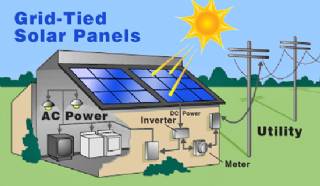
Solar Energy Systems - Solar Inverter - Solar Panel Inverter
Most grid-connected inverters can be installed outdoors, while most off-grid inverters are not weatherproof. There are essentially two types of grid-interactive inverters: those designed for use with batteries and those designed for a system without batteries.
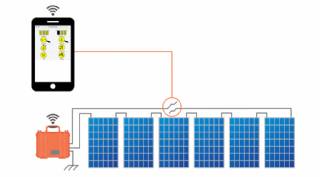
Solar Energy Systems - Solar Disconnects
Automatic and manual safety disconnects protect the wiring and components from power surges and other equipment malfunctions. They also ensure the system can be safely shut down and system components can be removed for maintenance and repair.
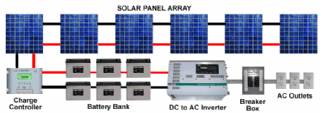
Solar Energy Systems - Solar Battery Bank
Batteries store direct current electrical energy for later use. This energy storage comes at a cost, however, since batteries reduce the efficiency and output of the PV system, typically by about 10 percent for lead-acid batteries. Batteries also increase the complexity and cost of the system.

Solar Energy Systems - Solar Charge Controller
A charge controller, sometimes referred to as a photovoltaic controller or battery charger, is only necessary in systems with battery back-up. The primary function of a charge controller is to prevent overcharging of the batteries. Most also include a lowvoltage disconnect that prevents over-discharging batteries. In addition, charge controllers pr
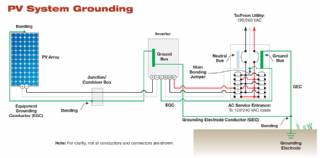
Solar Energy Systems - The NEC and PV Systems
Solar PV systems must be installed in accordance with Article 690 of the National Electric Code, which specifically deals with PV systems, as well as several other articles of the NEC that pertain to electrical systems in general. When there is a conflict between NEC 690 and any other article, NEC 690 takes precedence due to the unique nature of PV